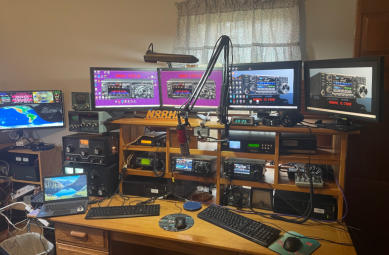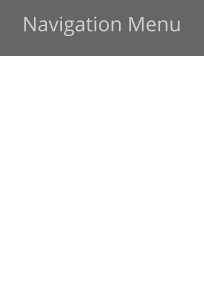












© The Broadway Family Website
Amateur Radio
I became interested in the hobby of Amateur Radio when I was in school, testing for my Novice class license in 1964. I discovered girls, and let the radio sport expire until a radio station engineer played the Central Ohio Severe Weather Net for me- I was hooked. I got my General Class license as N8BHL in 1979. I was only interested in two meters (a local frequency with repeaters and mobile stations) until a hurricane came through the southern states. I listened to the National Hurricane Net on 20 meters, and got hooked on the “low bands” working distances and meeting hams all over the world. In 1982, I passed the Morse code at 20 words per minute, and scored the Extra Class License- the highest ranking available. After some years, a move and other changes, I lost interest in the low bands, and my antennas sat in a a pile for 20 years. When several hams at my workplace got together to form a ham radio club, my interest rekindled, and I started putting together a station. I put my old Yaesu FT-102 radio back on the desk, after world- renown FT-102 expert Mal Eiselman went through and made it sing again. I’ve added other equipment including the latest digital transmission modes, and I moved the radio room upstairs. I have two towers and several antennas. I have a couple radios in my truck, one of which I’ve used to talk to Siberia. I served as Vice President of the Delaware Amateur Radio Association (DELARA) for a number of years where I published the online newsletter and the club website (http://www.k8es.org). Our newsletter won numerous honors including several “Best in the Great Lakes”. I renewed my interest in emergency communications, and served as the “Emergency Coordinator” for The Ohio ARES (Amateur Radio Emergency Service.) for 10 years. As such I coordinated activities in nearly every county of the state. We served the EMA, the Red Cross, other responding agencies, and public service events and organizations. I purchased and remodeled two RV trailers named “Canned Ham” and “Canned Ham 2”, turning them into a mobile communications vehicles. I am also a Net Control Operator, Assistant Net Manager and a member of the Board of Directors for the “Hurricane Watch Net” which serves as the first warning of hurricanes since the early 1960’s to the Atlantic Basin. We gather direct observations and spotter reports and feed them to the National Hurricane Center in Miami and the Canadian Center.
Sandi Stan



© Lorem ipsum dolor sit Nulla in mollit
pariatur in, est ut dolor eu eiusmod lorem

























